The Most Beautiful Places in Vermont
From Burlington to Barre, Yankee’s longtime editor, Mel Allen, shares his picks for some of the most beautiful places in Vermont.
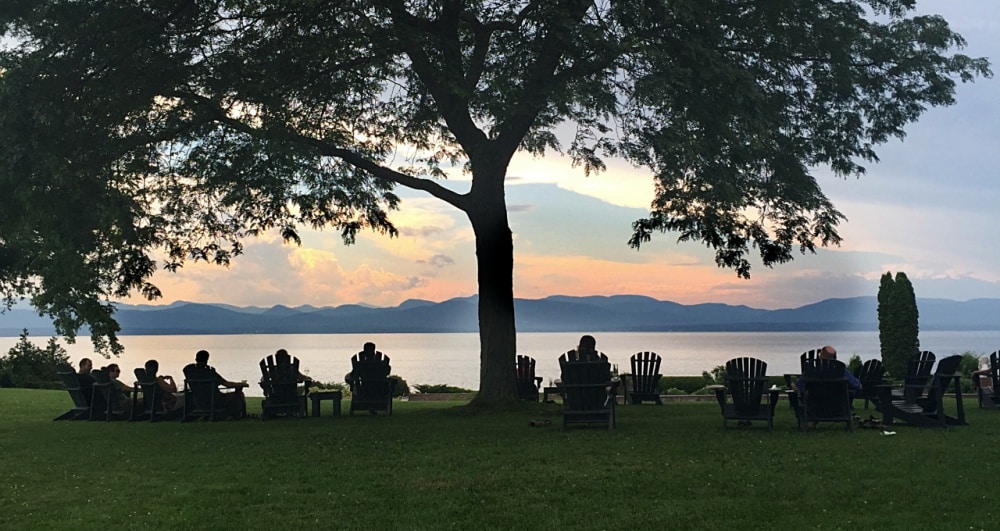
When you go looking for the most beautiful places in Vermont, you may be disappointed if what you seek is grandeur — sights that will stop your heart in an instant. Vermont’s beauty is more subtle. It sneaks up on you, works its way into you like music. And suddenly you realize you are entranced.
Because Vermont borders my home state of New Hampshire, I have driven thousands of miles on its roads, both paved and not (there are more miles of dirt roads here than in any other state in the country). When I think of Vermont’s most beautiful places, I think first of those times when I stopped and felt their quiet beauty taking me by surprise. From sunset on Lake Champlain to a picture-perfect Vermont farm, here are my most beautiful places in Vermont.
The Most Beautiful Places in Vermont

Photo Credit : User Submitted/Mark Ahlers
Lake Willoughby, Westmore
Vermonters are quick to tout the Northeast Kingdom as the truest Vermont. A mix of beauty and grit, its villages are filled with people who work hard, love the outdoors, embrace winter as a time to snowmobile and ski, who know that fall is its Mardi Gras, when the outside world discovers that their kingdom truly shines. They also know that no lake in the state shimmers like Willoughby. The lake and its surroundings has been called the “Lucerne of America”; however, the world has long known of that tourist-filled city in the Swiss mountains, and so few know of this second-deepest lake in Vermont, its water cold and clear enough to see fish several feet beneath the surface. Mount Pisgah and Mount Hor frame the glacier-carved waters — and if you come away thinking you’ve been swimming or hiking by a Norwegian fjord, you’ll not be the first.

Photo Credit : Aimee Tucker
Quechee Gorge, Quechee
On Route 4, less than eight miles east of the town jewel of Woodstock, you come to what people like to call “Vermont’s Little Grand Canyon.” Well, OK — if by little you mean really little. But that’s the point. When you go searching for sheer beauty, it’s best to take it as it comes, and small is beautiful. The gorge was carved thousands of years ago by retreating glaciers from the Ottauquechee River, which flows below. When my boys were little, 6 or 7 years old, we kept watch as they easily maneuvered to the flat rocks below where we followed, picnic in tow. The gorge’s natural beauty is enhanced for some tourists by the shopping village just a stone’s throw away, built up with the kinds of nifty shops in which you can while away an afternoon.
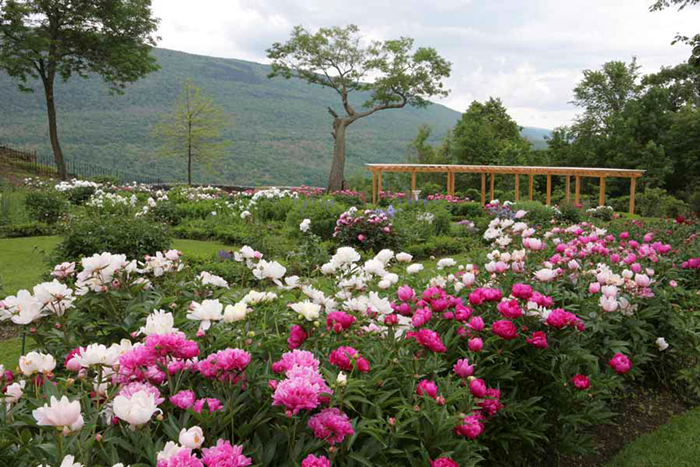
Photo Credit : Courtesy of Hildene
Hildene, Manchester
Sometimes beauty is enhanced by the realization you are standing in a place with echoes of precious history. This summer home of Robert Todd Lincoln, son of Abraham and Mary Todd Lincoln, was built at the beginning of the 20th century and remained with Lincoln heirs until 1975. In summer you can stroll the gardens, and perhaps reflect on how the great figures of American history are not all that far removed from our lives today.
SEE MORE: Hildene | The Lincoln Family Summer Home
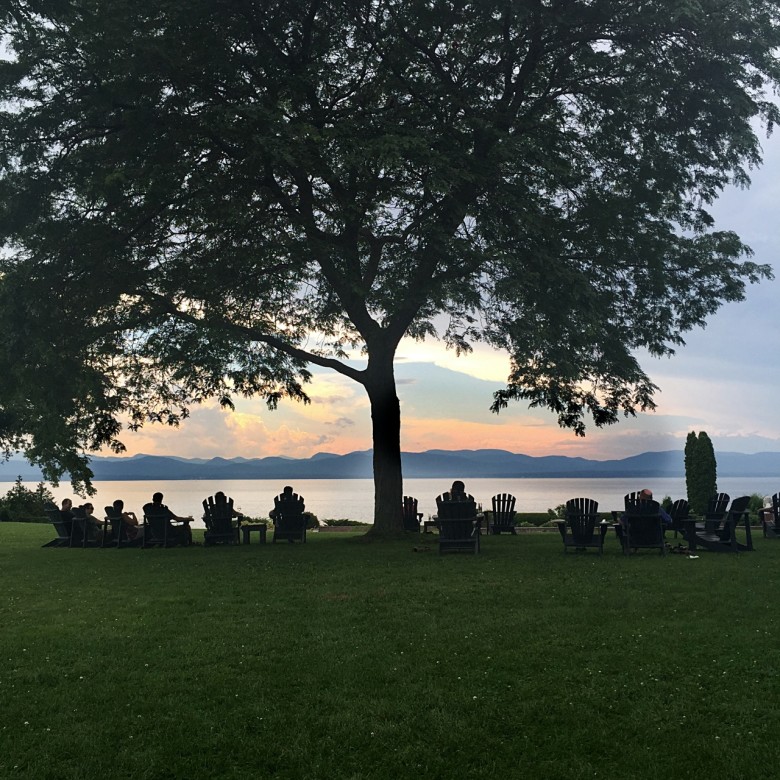
Photo Credit : Aimee Tucker
Sunset on Lake Champlain
Vermont’s great lake washes the shores of Burlington, a small city that belongs on every visitor’s bucket list for New England. The Adirondacks of New York state rise to the west, and to sit on a bench at Battery Park — with the seagulls circling above, sailboats gliding over the sparkling water, the sound of waves rippling against the banks — makes sunset an occasion each day. For an equally memorable experience, get a table at Splash at the Burlington Boat House, where it’s impossible (short of jumping into the water) to get a more intimate look at the lake than here, on a floating dock; order something cold, and see what I mean about beauty sneaking up on you. Another perfect Lake Champlain sunset viewing? From the comfort of an Adirondack chair on the lawn at the historic Shelburne Inn at Shelburne Farms.
SEE MORE: Late Fall Weekend in Burlington, Vermont
[text_ad]
Middlebury Gap Road
OK, on this drive it’s perfectly fine to stop and take a breath, as in: It’s breathtaking. Running nearly 30 miles through the mountains from Middlebury to Hancock, the Middlebury Gap Road (Route 125) rises and dips and twists its way past waterfalls and valley views framed by mountains that make drivers jealous of their passengers, who can simply take it all in.
SEE MORE: The Ultimate Road Trip for Fall Foliage, Seafood, Cider Donuts, and More
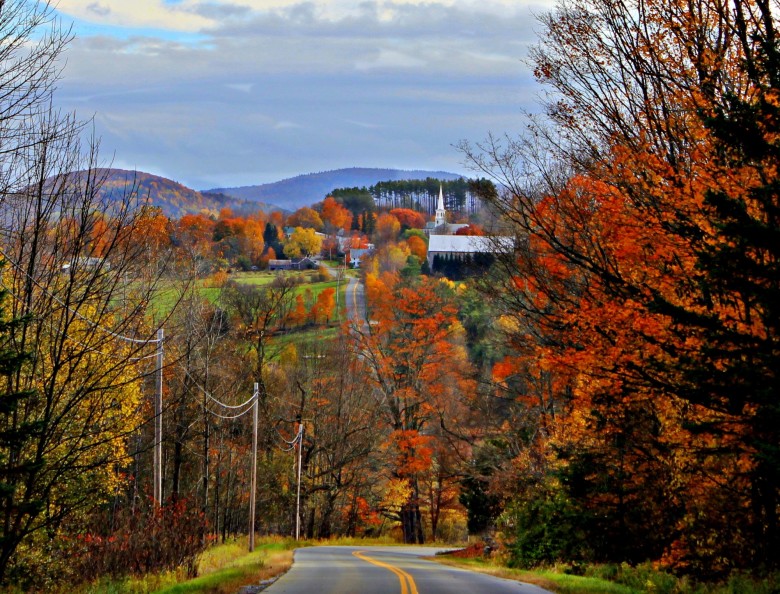
Photo Credit : User Submitted/Christine Hanaford
Peacham
Village must be one of the most lyrical words in our language. You hear it, and you think tranquil, narrow streets; children playing on a green; shops with bells that tinkle when customers enter. A decade or so ago, Yankee declared Peacham to be New England’s most iconic village, and we were merely the latest in a long line: In the early 1950s, when Life wanted a story on quintessential New England, it sent photographer Clemens Kalischer to Vermont, and he found Peacham. His photos helped define for America the image of rural Vermont, and it wasn’t long afterward that urbanites started their own pilgrimage to Peacham. It’s not an accident that one of Vermont’s most beloved contemporary photographers, Richard Brown, calls this Northeast Kingdom village of about 730 home, or that Hollywood has filmed parts of four major films here amid its pitch-perfect New England setting. If you come in October, you may not ever leave.
SEE MORE: Prettiest Fall Foliage Villages in Vermont
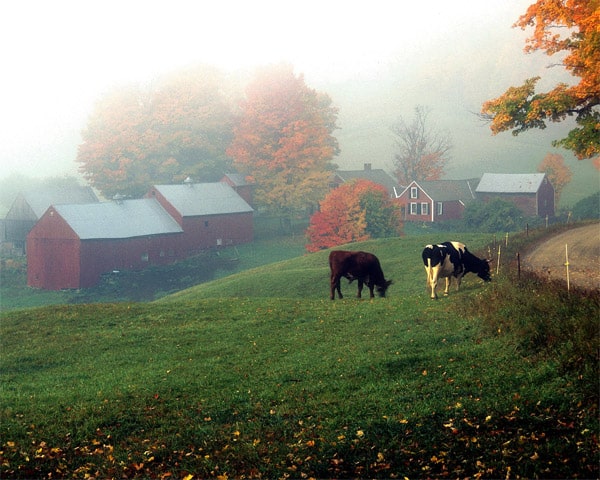
Photo Credit : User Submitted/Steve Hirsch
Jenne Farm, Reading
Roughly 12 miles south of Woodstock and just off Route 106 is a dirt road like so many hundreds of other dirt roads in Vermont. Take a left at a small sign for Jenne Farm and drive slowly to the crest of the road. There, just below, is a cluster of farm and outbuildings much like what you’d find at any number of other Vermont dairy farms. And you will think, I have seen this before. Because you surely have. The Jenne Farm has long been known as Vermont’s most photographed farm, going back decades to when entire photography classes and photo clubs would journey to the hillside and take in the perfection of trees, valley, classic farm buildings. There may be no better example of beauty in repose.
SEE MORE: Jenne Farm | 7 Wonders of Fall
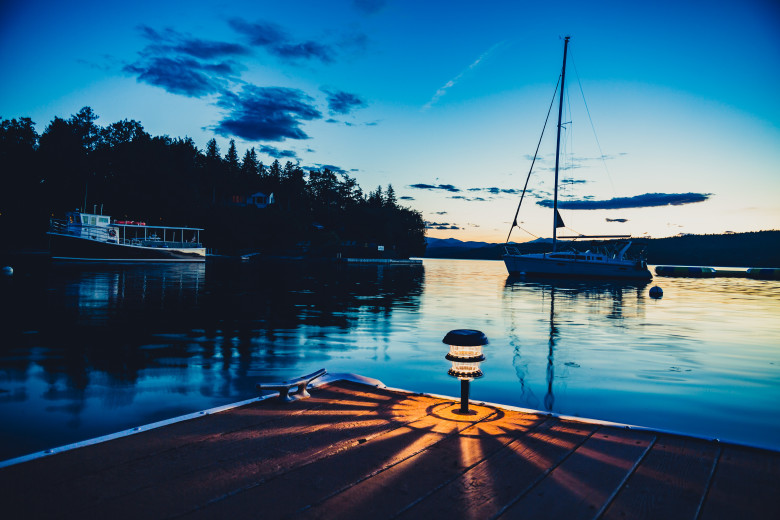
Photo Credit : Courtesy of Basin Harbor
Basin Harbor, Vergennes
There’s a photo on the wall in my home office of my son Josh as a 5-year-old paddling a kid-sized kayak. He’s just offshore at Basin Harbor (formerly Basin Harbor Club), which has been overseen by the Beach family since 1886. A lot has changed since then! There’s golf and Adirondack chairs that sprawl seemingly everywhere, and a view of the lake and sailboats and canoes out beyond the dock. Trim cottages dot the shoreline and peek out from the woods. There may not be a more serene summer setting anywhere.
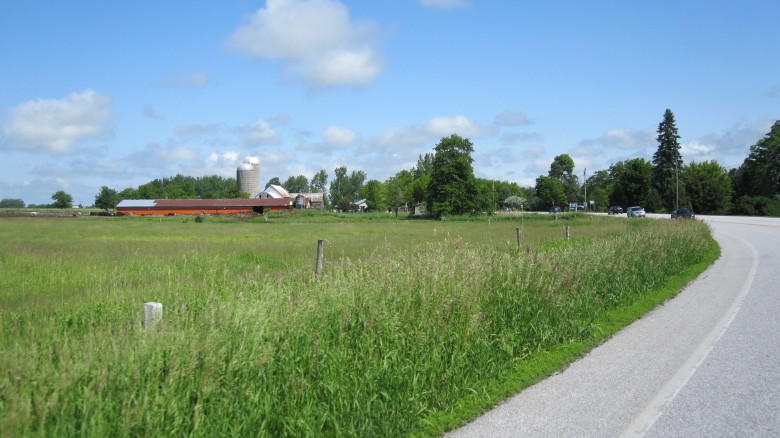
Photo Credit : Annie Graves
The Champlain Islands
This cluster of islands that stretches along Lake Champlain for some 30 miles, from South Hero to the Alburg peninsula, qualifies as one of the premier bike riding spots in the country. You come upon farm stands, a vineyard, a maker of ice wine, a beautiful chapel, narrow roads that end where lake meets land, country lanes bordered by cottages, and enough French accents (with all those Quebec visitors) to make you want to find a baguette and cheese and just sit awhile. Given all the sights to see, it’s a little ironic that the most beautiful time here may well be twilight and then nightfall. There are no towns, really, just a string of villages, and on clear nights the sky will seem to bloom with stars.
SEE MORE: Vermont’s Champlain Islands | Freshwater Pearls
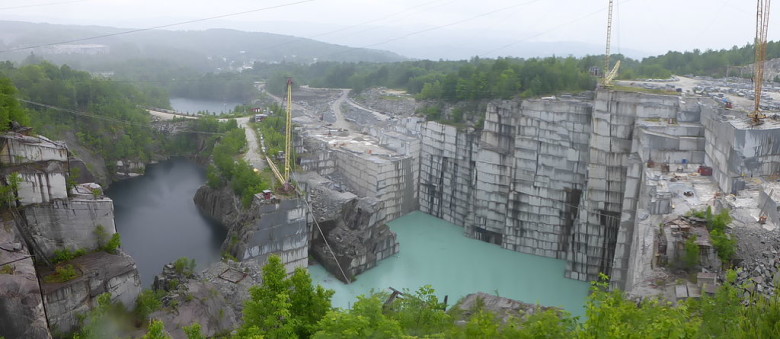
Photo Credit : Photo by Z22 / CC BY-SA 3.0
Rock of Ages Quarry and Hope Cemetery, Barre
It is fair to wonder why and how a cemetery could make it onto a list of the most beautiful places in Vermont. By way of an answer, I extend you an invitation to wander the grounds and marvel at the exquisite stonework crafted by the Italian-born stonecutters who settled in Barre and their descendants. But there is also another, even deeper beauty. Read the words on the stones. Think of the lives behind those words. Then say this is not beautiful.
SEE MORE: Most Beautiful Cemeteries in New England
What are your picks for the most beautiful places in Vermont?
This post was first published in 2017 and has been updated.
SEE MORE:
Grafton, Vermont | A Quiet and Cozy Winter Town
A Store Like No Other | The Vermont Country Store
Scenes from the VT Cheesemakers’ Festival
***

Mel Allen is the fifth editor of Yankee since the magazine began in 1935. His career at Yankee spans more than three decades, during which he has edited and written for every section of the magazine, including home, food, and travel. In his pursuit of stories, he has raced a sled dog team, crawled into the dens of black bears, fished with the legendary Ted Williams, picked potatoes in Aroostook County, and stood beneath a battleship before it was launched. We think he’s as New England as they come.
Mel Allen
Mel Allen is the fifth editor of Yankee Magazine since its beginning in 1935. His first byline in Yankee appeared in 1977 and he joined the staff in 1979 as a senior editor. Eventually he became executive editor and in the summer of 2006 became editor. During his career he has edited and written for every section of the magazine, including home, food, and travel, while his pursuit of long form story telling has always been vital to his mission as well. He has raced a sled dog team, crawled into the dens of black bears, fished with the legendary Ted Williams, profiled astronaut Alan Shephard, and stood beneath a battleship before it was launched. He also once helped author Stephen King round up his pigs for market, but that story is for another day. Mel taught fourth grade in Maine for three years and believes that his education as a writer began when he had to hold the attention of 29 children through months of Maine winters. He learned you had to grab their attention and hold it. After 12 years teaching magazine writing at the University of Massachusetts-Amherst, he now teaches in the MFA creative nonfiction program at Bay Path University in Longmeadow, Massachusetts. Like all editors, his greatest joy is finding new talent and bringing their work to light.
More by Mel Allen

